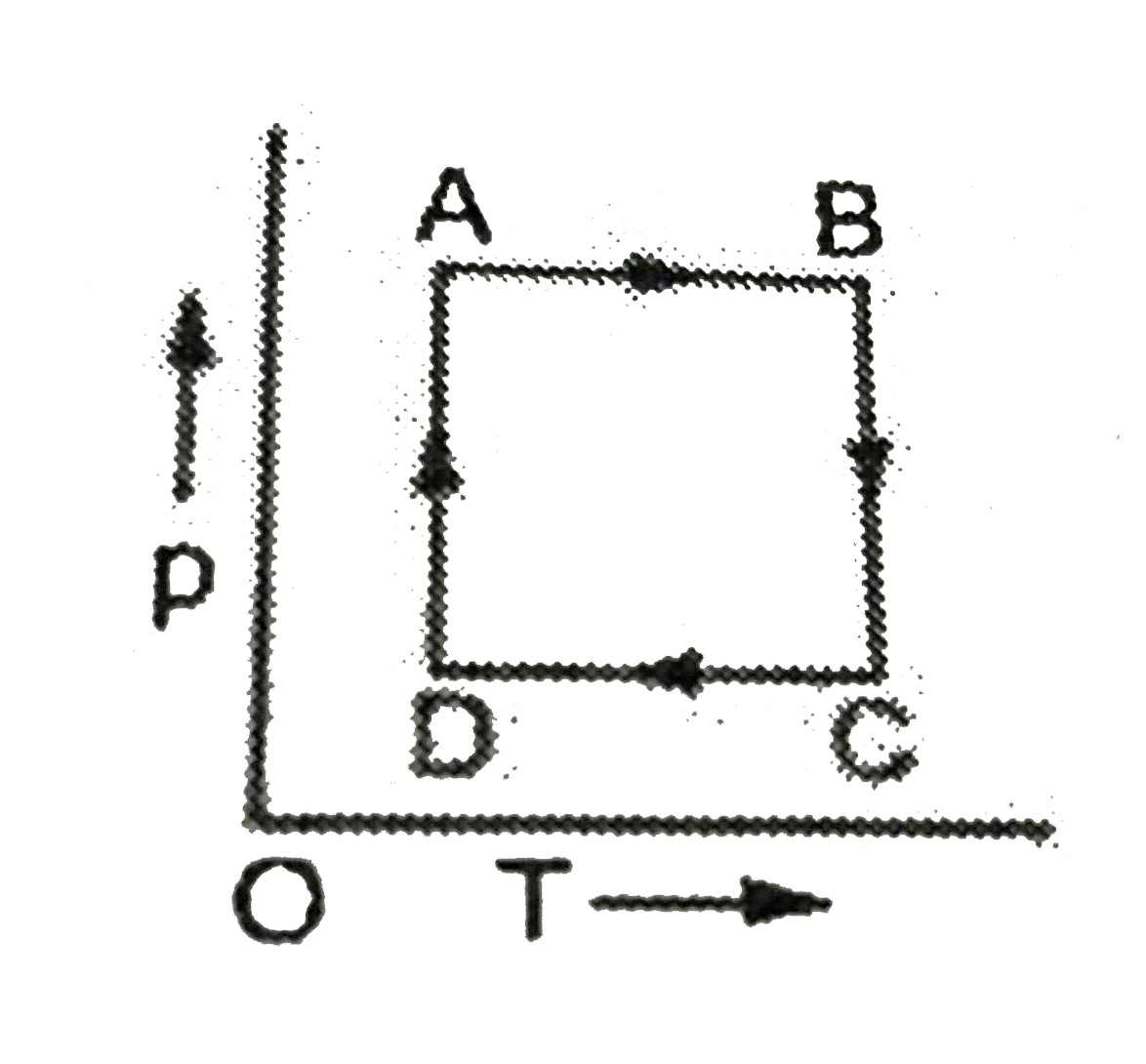A gas takes part in two processes in which it is heated from the same initial state 1 to the same final temperature. The processes are shown on the p-V diagram by the straight lines 1-3 and 1-2. 2 and 3 are the points on the same isothermal curve. Q1 and Q2 are the heat transfer along the two processes. Then,
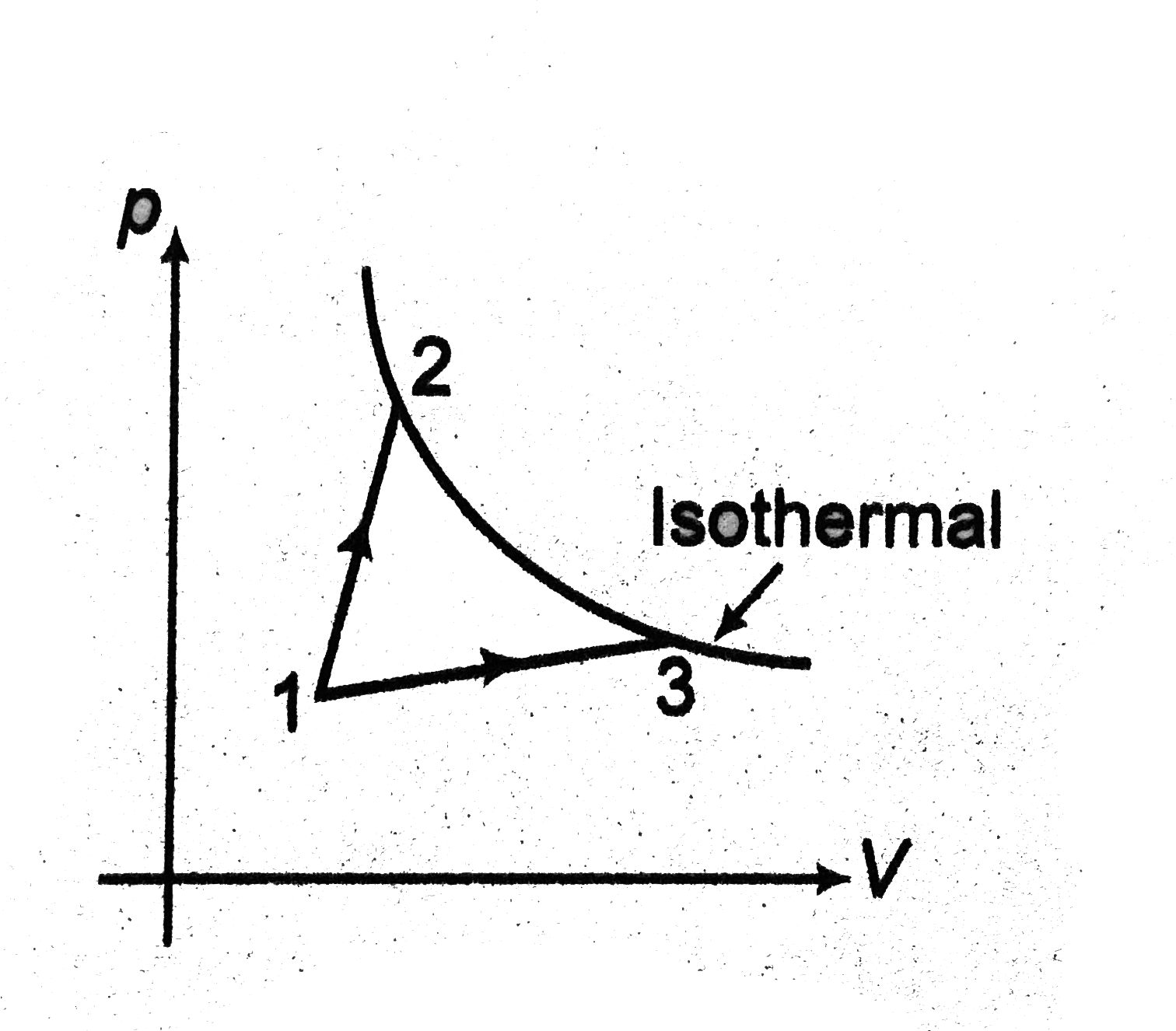
Q1=Q2
Q1<Q2
Q1>Q2
Insufficient data
The correct Answer is:C
T2=T3 (lying on same isotherm)
∴ ΔU1=ΔU2
W=Hatched area
=12(pi+pf)(Vf−Vi)
=12(piVf−piVi+pfVf−pfVi)

Now, piVi and pfVf are same for both processes. Further pi and Vi, area also same for both processes.
For 1→3Vf is more and pf is less. Hence, W will be more.
Now, Q=W+ΔU
W13>W12
∴ Q13>Q12 (as ΔU is same)
Topper's Solved these Questions
- LAWS OF THERMODYNAMICSBOOK - DC PANDEYCHAPTER - LAWS OF THERMODYNAMICSEXERCISE - Level 2 More Than One Correct
6 Videos
- LAWS OF THERMODYNAMICSBOOK - DC PANDEYCHAPTER - LAWS OF THERMODYNAMICSEXERCISE - Level 2 Passage I
2 Videos
- LAWS OF THERMODYNAMICSBOOK - DC PANDEYCHAPTER - LAWS OF THERMODYNAMICSEXERCISE - Level 1 Subjective
24 Videos
- LAWS OF MOTIONBOOK - DC PANDEYCHAPTER - LAWS OF MOTIONEXERCISE - Medical entrances gallery
39 Videos
- MAGNETIC EFFECT OF CURRENT AND MAGNETISMBOOK - DC PANDEYCHAPTER - MAGNETIC EFFECT OF CURRENT AND MAGNETISMEXERCISE - Integer type Questions
10 Videos
Similar Questions
Knowledge Check
A gas take part in two thermal processes in which it is heated from the same initial state to the same final temperature. The processes are shown on the P−V diagram by straight lines 1→3 and 1→2
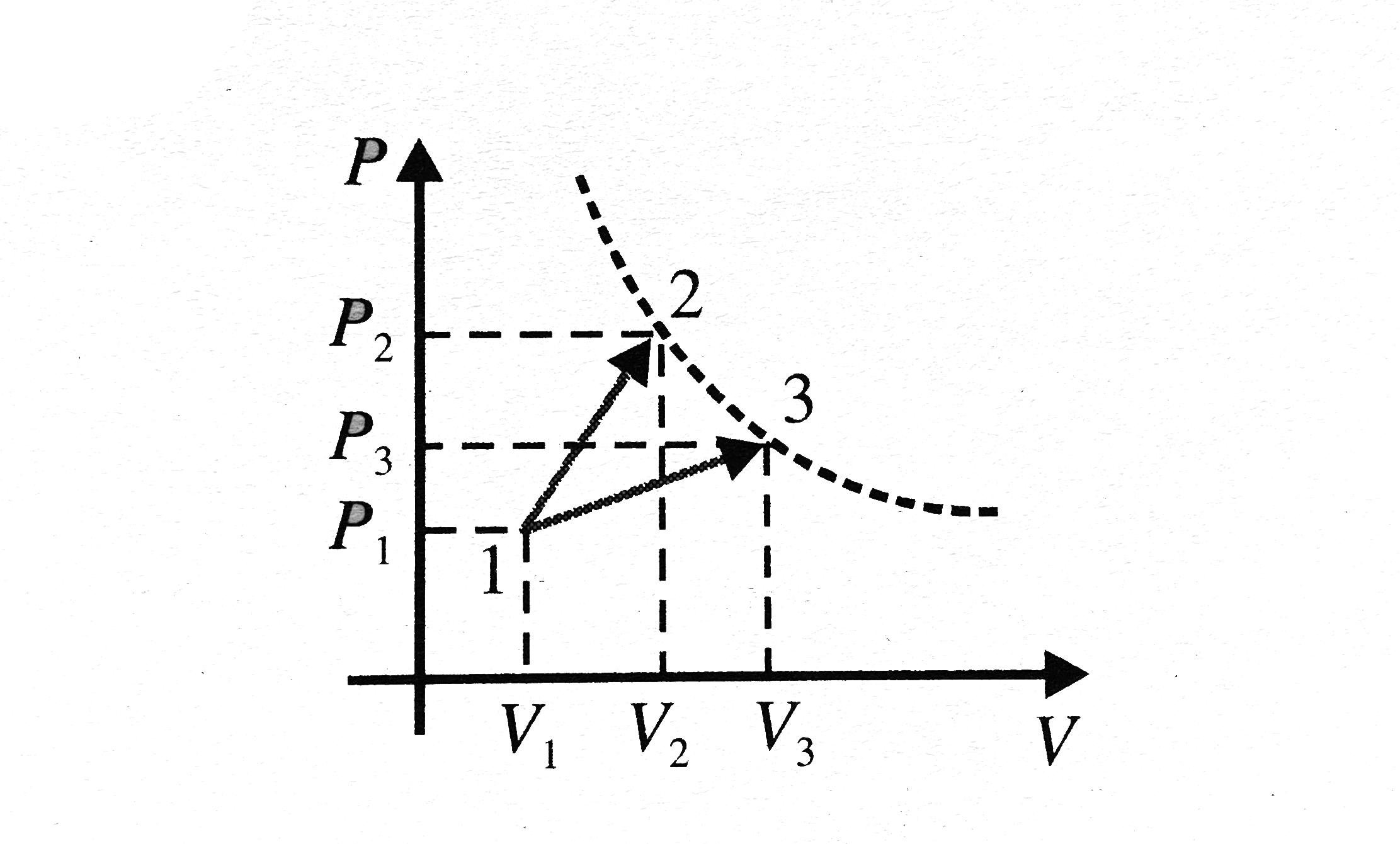 AQ13<Q12BQ13>Q12CQ13=Q12DNone of above
AQ13<Q12BQ13>Q12CQ13=Q12DNone of aboveA gas take part in two thermal processes in which it is heated from the same initial state to the same final temperature. The processes are shown on the P−V diagram by straight lines 1→3 and 1→2
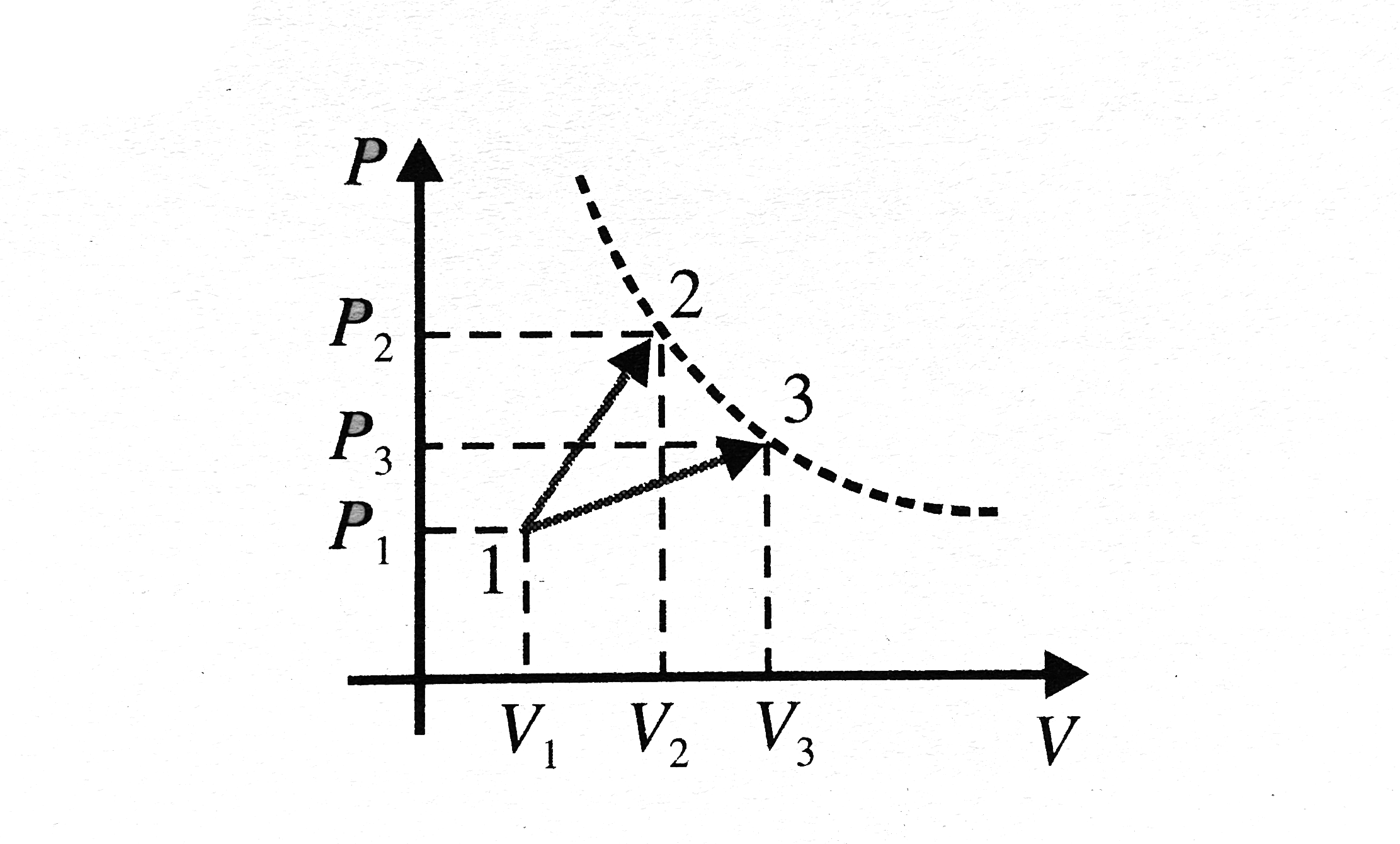 AW13>W12BW12>W13CW13=W12DNone of above
AW13>W12BW12>W13CW13=W12DNone of aboveAn ideal gas is subjected to two different process in which it is heated to same final temperature from same initial state (A) as shown in diagram, then :
 Aheat absorbed by the system will be more in AB process.Bheat absorbed by the system will be more in AC processCheat absorbed by the system will be same in AB and AC processDNone of the above
Aheat absorbed by the system will be more in AB process.Bheat absorbed by the system will be more in AC processCheat absorbed by the system will be same in AB and AC processDNone of the above

A cyclic process ABCD is shown in the p-V diagram. Which of the following curves represent the same process?
View Solution
An ideal gas takes part in two thermal process in which it is heated from same initial state A. Once it is taken from A to B and in the other case from A to C. The points B and C lie on an isotherm. Choose the correct options.
View SolutionConsider two processes on a system as shown in figure.
The volumes in the initial states are the same in the two processes and the volume in the final states are also the same.Let ΔW1 and ΔW2 be the work done by the system in the processes A and B respectively.
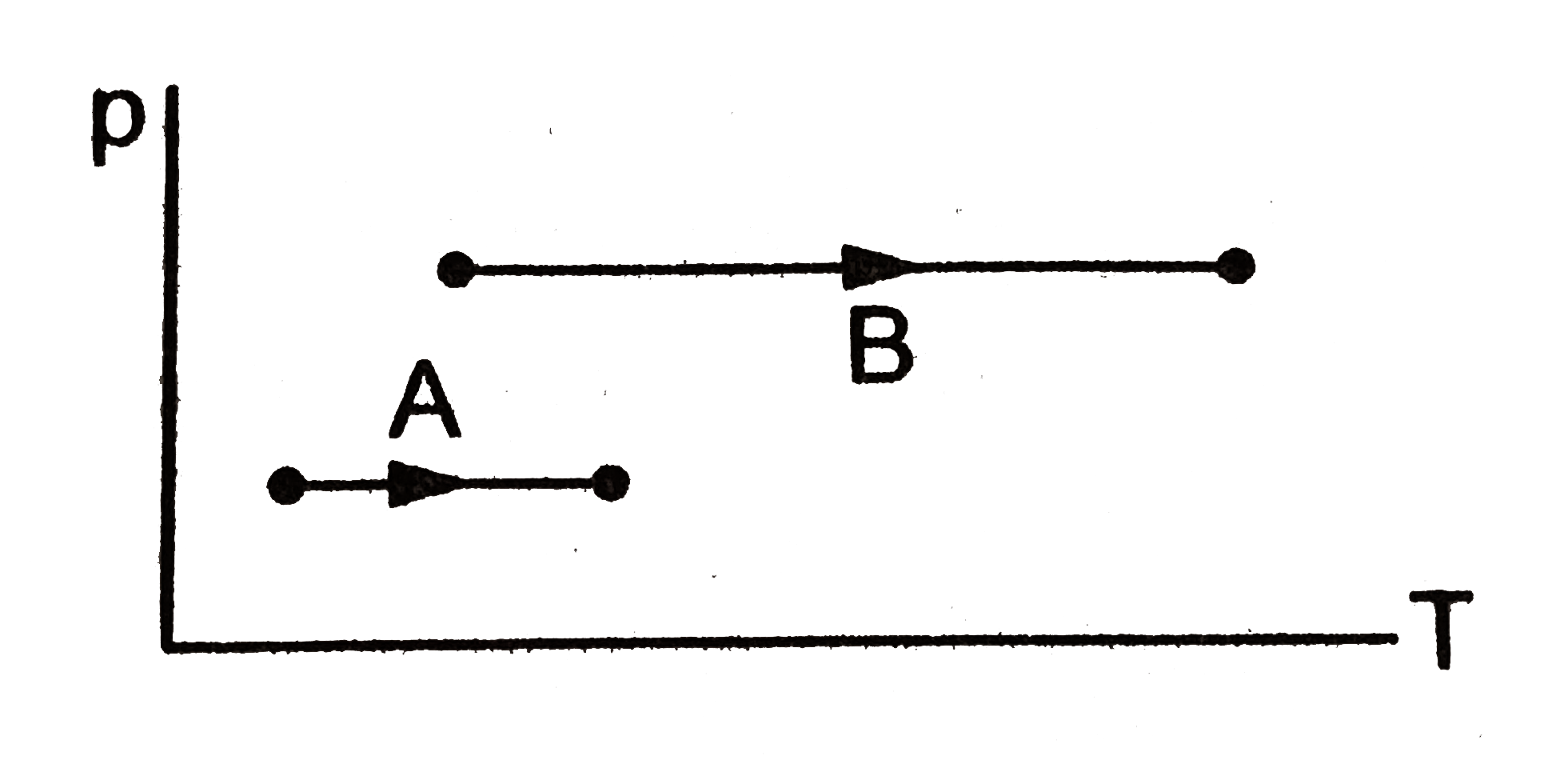
View SolutionIn figure, three isothermal processes are shown for the same gas and for same change in volume (Vi−Vf) but at different temperature. If ΔQ1,ΔQ2, and ΔQ3 are the heat transferred in the respective process, then
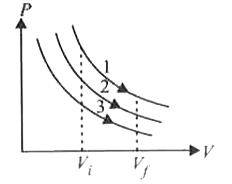
View Solutionconsider two processes on a system on a system as shown in
the volumes in the initial states are the same in the two processes and the volume in the final states are also the same.Let ΔW1andΔW2 be the work done by the sustem in the processes A and B respectively.

View Solution

